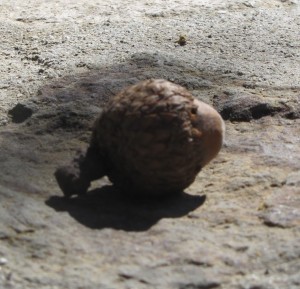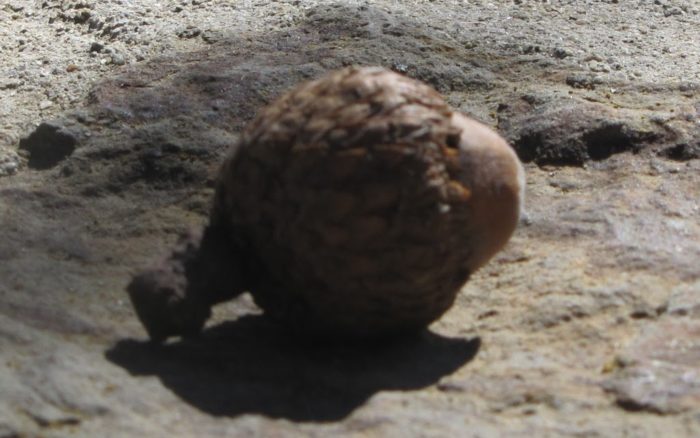 |
| Black Oak Seed |
Rudolf Steiner stated that when matter’s complexity is taken to its most ultimate degree (as in the seed), it disintegrates, and chaos ensues. Carl Jung would call this enantiodromia: the tendency to change into the opposite, “especially as a supposed governing principle of natural cycles and of psychological development” (New Oxford American Dictionary, a word coined in the early 20th century, the time of both Jung and Steiner). In the case of the seed, it is at this point of chaos that the whole surrounding universe begins to work on the seed. The parent plant which was formed by an affinity for certain cosmic forces, brings a dandelion seed into relationship with these cosmic forces in such a way that replicates dandelion, yet the form of the individual plant always reflects some cosmic constellation. Steiner concludes that when we want “the forces of the cosmos to take effect in earthly substance, we have to drive this earthly substance as strongly as possible into chaos”(Agriculture, 35). His words reflect that which we have so sorely lost sight of since the Enlightenment and Age of Reason: the importance of the cosmic forces in creation.
This is the way I work as a Jungian analyst. Although work with the substance of living: problems and their solutions, and adaptations, is often an important part, the emphasis is to reconnect with the forces of the cosmos, which in this case, we may call Self. This is the real crisis of our time: learning to consciously recognize the ways we are energetically connected with the whole of creation.
Toward the end of his life, Carl Jung stated:
… the man who thinks he can live without myth… is like one uprooted, having no true link either with the past, or with the ancestral life which continues within him, or yet with contemporary human society. He … lives a life of his own, sunk in a subjective mania of his own devising, which he believes to be the newly discovered truth. This plaything of his reason never grips his vitals.… The psyche is not of today; its ancestry goes back many millions of years. Individual consciousness is the flower and the fruit of a season, sprung from the perennial rhizome beneath the earth; and it would find itself in better accord with the truth if it took the existence of the rhizome into its calculations. For the root matter is the mother of all things (Jung, “Forward to the Fourth Edition”, Symbols of Transformation, CW5).
Myth connects us with cosmic forces. When people ask me how analysis works, I tell them it is seldom by insight (substance), although insight may well be a byproduct and is nice when it happens. Instead I tell them what was told to me: my job as an analyst is to stir, to keep things circling, through my attention, questions, interest. The ego goes into a kind of chaos or de-integration. Insight may develop: how you are a part of a larger whole, how you really feel about things, how your upbringing influences who you are now. In this chaos of consciousness, we are most open to the divine.
Then one day, Goddess willing, lightening strikes. The energy of the Self charges the seed of ourselves, and change happens. It is like a move into another orbit, one in which we are uniquely ourselves yet connected to the cosmic imprint of our heritage and of our future.
What happens in the earth and what happens in the psyche are of one piece.
